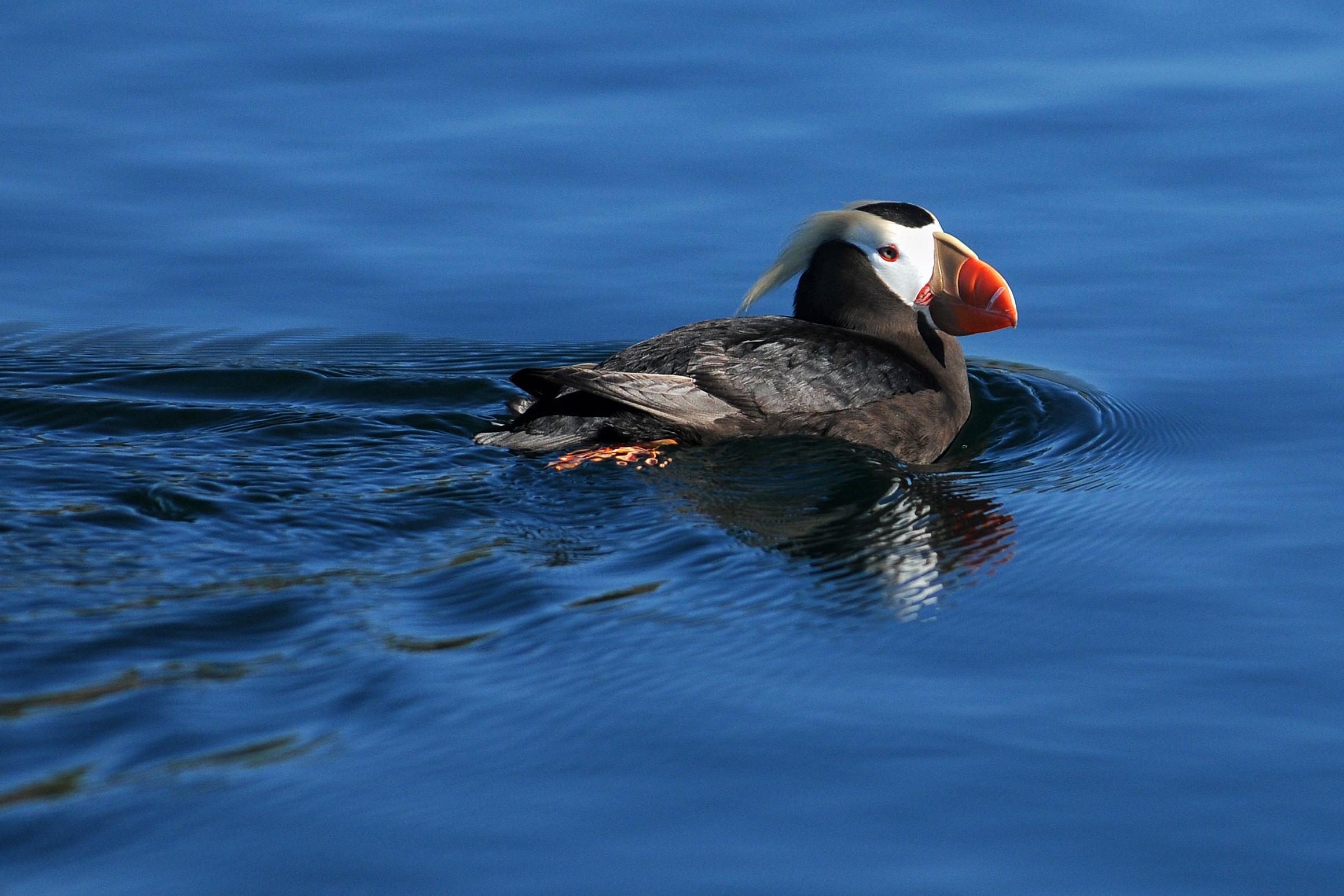
Photo courtesy of Outdoor Project
This article is provided courtesy of the U.S. Fish and Wildlife Service.
The tufted puffin is an iconic species of the Oregon coast, its likeness gracing untold numbers of T-shirts, coffee mugs, refrigerator magnets and other souvenirs throughout the region. And with good reason: The puffin is an undeniably attractive bird, looking something like a cross between a parrot and a penguin, sharply made up and impeccably dressed. Its blonde, back-swept head plumes bespeak an urbane haughtiness; the contrast of tangerine bill and snow-white mask against its otherwise somber plumage is at once jarring and irresistible.
All appearances aside, tufted puffins are truly remarkable birds. They spend their winters on the open ocean, chasing fish and invertebrates by “flying” hundreds of feet below the waves, yet they dig burrows in soil with their webbed feet come breeding season. Of all alcids, tufted puffins have the most extensive latitudinal distribution, ranging from Japan through the Aleutian Islands and south from Oregon to southern California. Few other seabirds call as much of the Pacific home as do the puffins.
Along the Pacific coast of North America, nesting tufted puffins were traditionally preyed upon by indigenous humans for their meat and eggs. Tribes such as the Tlingit in the Pacific Northwest fashioned garments from puffin skins and feathers, using their beaks for ceremonial rattles and apron-fringes. This sort of hunting pressure is mostly a thing of the past. These days, tufted puffins struggle with inadvertently ingesting ocean plastic, getting caught and drowning in gill-nets, and protecting their burrows from introduced mammalian predators such as foxes and rats. Since the mid-1990s, tufted puffin populations in Oregon and Washington have plummeted more than 95 percent.
Prime spots to view these birds in Oregon are Haystack Rock in Cannon Beach and Face Rock in Bandon. The tufted puffin molts the top layer of its colorful beak every summer after chicks have fledged, marking the end of breeding season—so visitors definitely want to catch the puffins in their full regalia. From May to August, colonies of nesting puffins can be seen along the entire Oregon coast wherever soil-topped islands exist; Haystack Rock currently hosts our largest breeding population.
Additional Facts
- Tufted puffins breed on soil-topped islands and coastal cliffsides, digging burrows up to 6 feet long into substrate.
- The burrows terminate in a grass- and feather-lined nest holding one egg per pair.
- When carrying food for young, the tufted puffin practices “bill-loading,” storing up to 20 fish crosswise in their bill.
- The tufted puffin lives far at sea most of the year, often returning to the same burrow annually to breed.